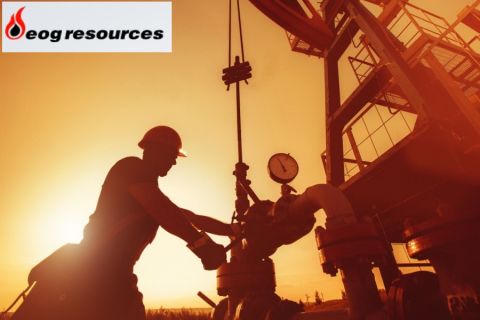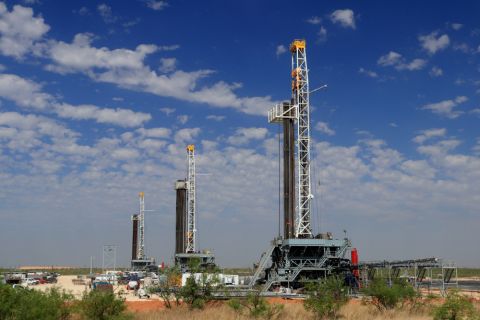Jordan Blum, editorial director, Hart Energy: We're here at NAPE in downtown Houston. I'm joined by Katja Akentieva, vice president of New Energy Solutions for the Western Hemisphere at TGS. Thank you so much for joining us. We're talking all things CCS, carbon capture and storage. I really wanted to just get your take first off, just kind of where we are in the process. I mean, it's an industry relatively in its infancy.
Katja Akentieva, vice president of New Energy Solutions, Western Hemisphere, TGS: Yes, thank you. It's really early days, but the opportunity for growth is there, and the momentum is being built. So part of the discussion here today was around the importance of CCS technology and it being a great enabler for decarbonization and for our ability as a world, as this country to reach net zero targets. And so in that, there are five countries right now that have big pipelines of projects. U.S. is one of those countries. And that momentum is being billed through the fact that the economic incentives are now being put in place as part of IRA and 45Q tax credits that enables emission producers to see those projects as commercially viable. And so there's a great momentum, and the good news is that we have a great potential here with a rock that is conducive to storage. And through our activities in the oil and gas, we have gained a lot of knowledge about the subsurface and that is one of the most critical elements to de-risk your investments in CCS for the storage part.
JB: Very good. Can I get you to compare and contrast, obviously the knowledge of the rock is important, but also kind of the onshore versus offshore and the Gulf of Mexico aspect as well.
KA: So there's a couple of areas there that are being explored in terms of geological environment. There are projects right now around the world that are looking into depleted reservoirs. So basically where we used to explore oil and gas, we can now store CO2 and also saline aquifers. That's another way to geologically store CO2. Both of those environments exist offshore and onshore. In terms of regulatory today, we have a very well-defined framework for state level with EPA regulating Class VI applications to enable sequestration projects to go ahead. For the federal side in Gulf of Mexico and specifically to Outer Continental Shelf, there's still regulatory framework that is being put in place to regulate those projects ultimately. And hopefully that will be introduced here shortly to help to move projects forward.
JB: Great. Now obviously there's, like you said, been a lot of money flowing from the IRA for this when it comes to the classics, well permitting though, is there much concern about the slowness of that process and maybe just the lack of workforce within the federal bureaucracy to move things along?
KA: Well, a couple of exciting things are happening. Also, primacy, for example, Louisiana getting primacy, meaning that they can now apply additional resources to help to get through that bottleneck of project applications. I think it's really important that the projects are moved within that queue in the most responsible manner. So certain requirements need to be met. There's a very clear process now and it is very descriptive and not very prescriptive. So you can have a pretty good feel of what it takes to really get the approval. And part of that is measurement and verification plan, MVP. So again, back to the point, that understanding of the subsurface is absolutely critical. So the question is how do we accelerate as an industry, how do we help to apply more resources to get more projects going? Because today there's only really one big project that is happening in the commercial scale, ADM in Illinois.
So how can the industry contribute to acceleration? I would like to use an example of TGS, where we have a lot of data, a lot of subsurface insight data collected through oil and gas activities, vast amounts of well data, seismic. So we are able to offer the industry a very efficient way to accelerate prospecting for storage. In a similar way that we prospect for oil and gas, we prospect for storage. Finding those containers of opportunity where we can store safely is very important. And so we are repurposing our data and providing analytic tools, utilizing our digital fluency to really help to make that process more efficient so you can get to it faster and you can actually make it more cost effective as well. At the same time, some of the other technology advancements are happening in order to accelerate the development are related to monitoring technologies. How do you ensure containment and conformance of that CO2 underground, and from TGS perspective, we see a lot of need for new acquisition technologies. We have already successfully applied one in the Gulf of Mexico recently to help with feasibility assessment of the site that's been selected for CO2 storage. So the good news is the subsurface is rather well understood. We have a lot of data, we have a lot of skillset to really scale this up.
JB: Very good. Just about getting things moving, really.
KA: Absolutely. Getting things moving is really important and the only way to really make a difference here is to scale. And that will then enable us to meaningfully impact our ability to truly remove those emissions if we scale it up quite significantly from where we are today. But there's a lot of reasons to be positive.
JB: Very good. Well, thank you so much for joining us here at nap. Really appreciate it. To read and watch more, please visit online at hartenergy.com.
Recommended Reading
Exclusive: XCL Increases Production Amidst Lookout for More Inventory
2024-06-07 - XCL Resources is beginning its journey to acquire Altamont Energy, but in the meantime, the company is refining its operations in the Uinta Basin to find the perfect lateral length.
Beetaloo Juice: US Shale Explores Down Under
2024-06-28 - Tamboran Resources has put together the largest shale-gas leasehold in Australia’s Beetaloo Basin, with plans for a 1.5+ Bcf/d play. Behind its move now to manufacturing mode are American geologists and E&P-builders, a longtime Australian wildcatter, a U.S. shale-rig operator and a U.S. shale pressure-pumper.
Crackin’ It at Kraken: Inside the Bakken’s Ramped-up Private E&P
2024-07-24 - Kayne Anderson-backed Kraken Resources is producing more than 80,000 boe/d today and has a new Fitch Ratings credit score to take to the M&A bank.
EOG: Utica Oil Can ‘Compete with the Best Plays in America’
2024-05-09 - Oil per lateral foot in the Utica is as good as top Permian wells, EOG Resources told analysts May 3 as the company is taking the play to three-mile laterals and longer.
SM Energy Targets Prolific Dean in New Northern Midland Play
2024-05-09 - KeyBanc Capital Markets reports SM Energy’s wells “measure up well to anything being drilled in the Midland Basin by anybody today.”





